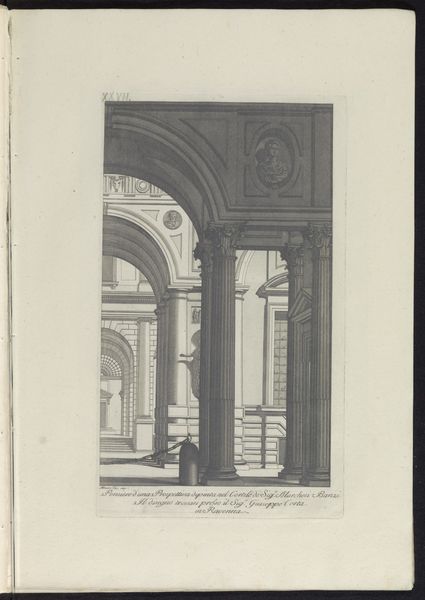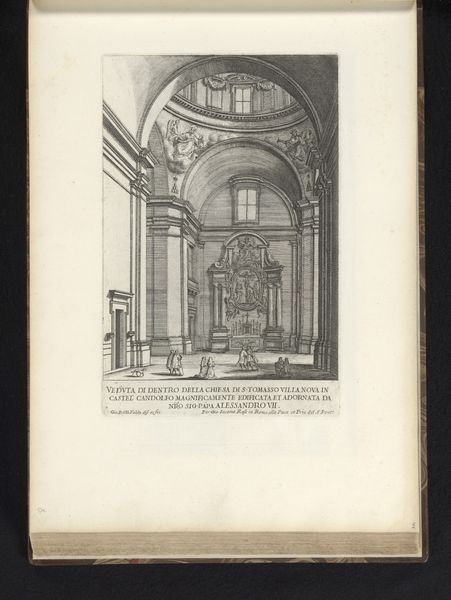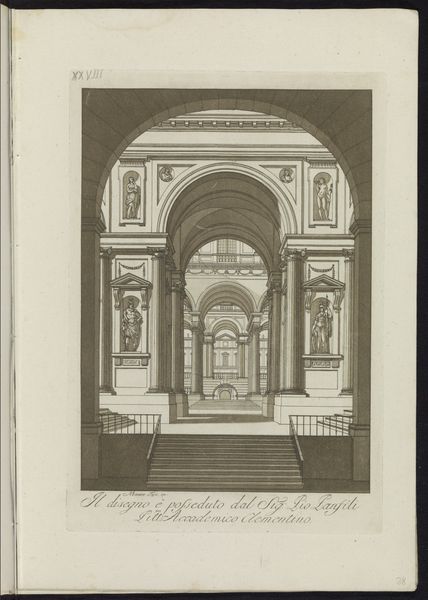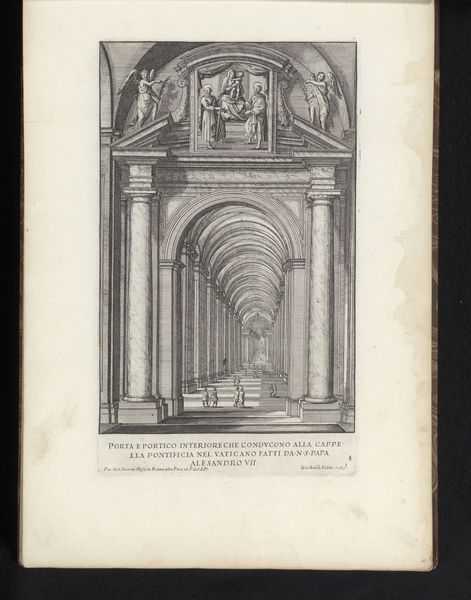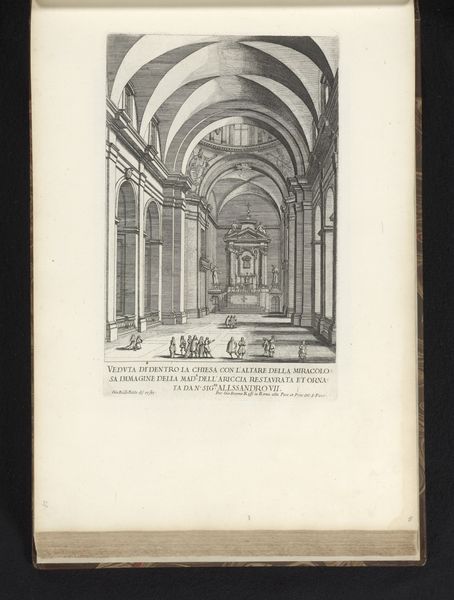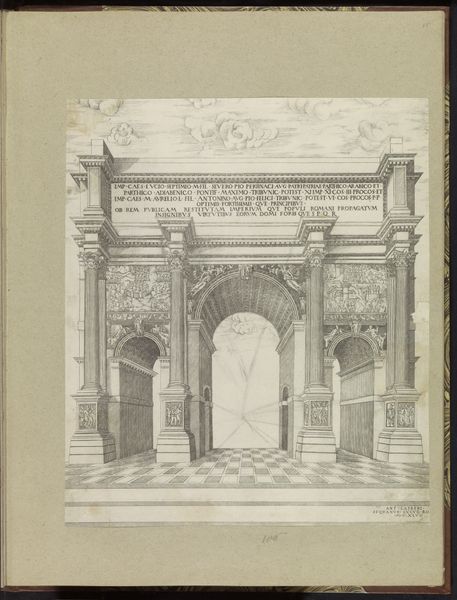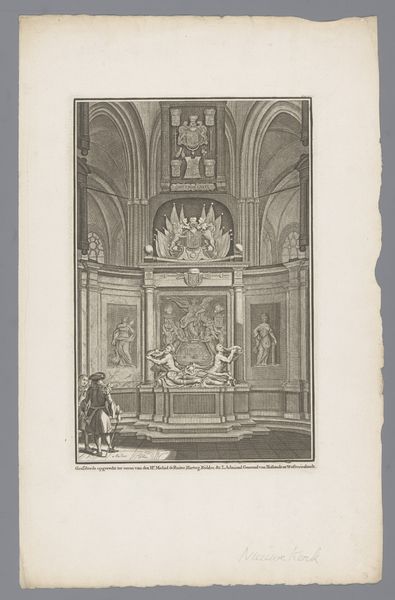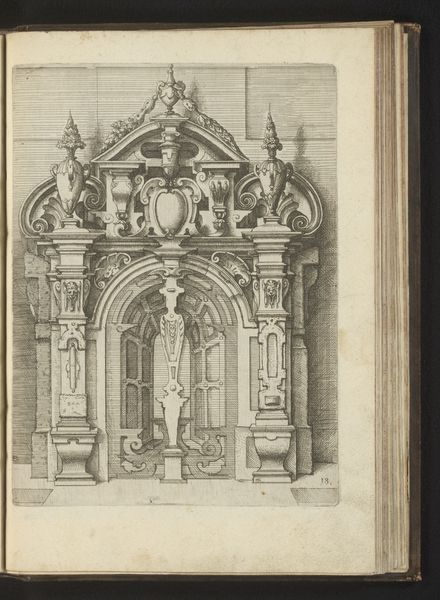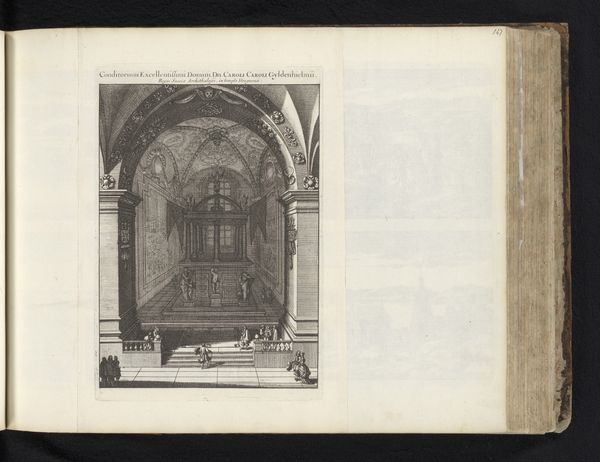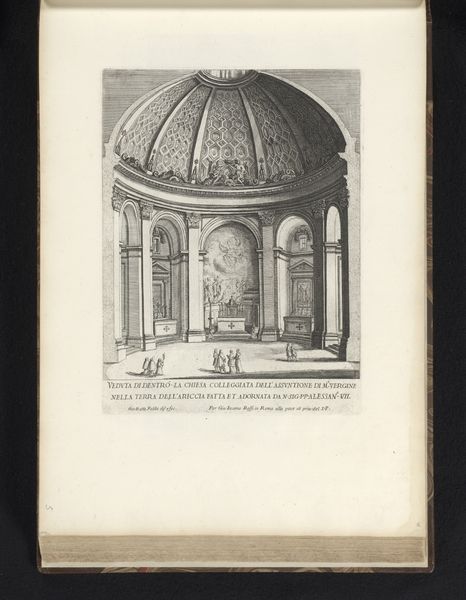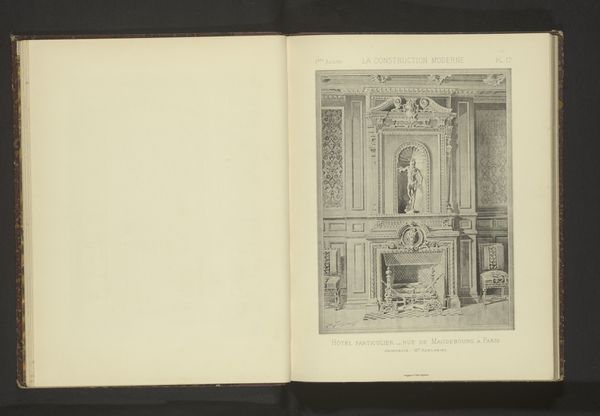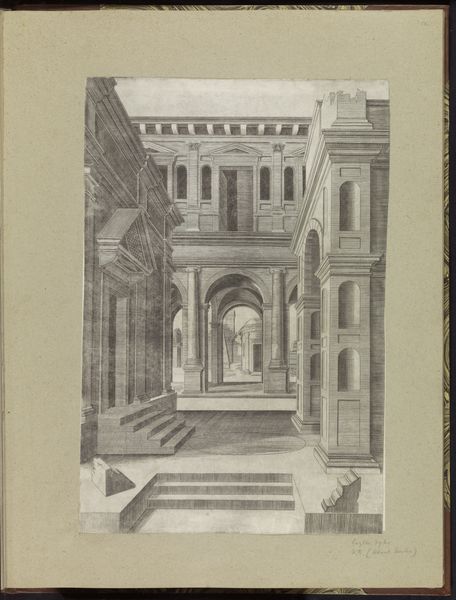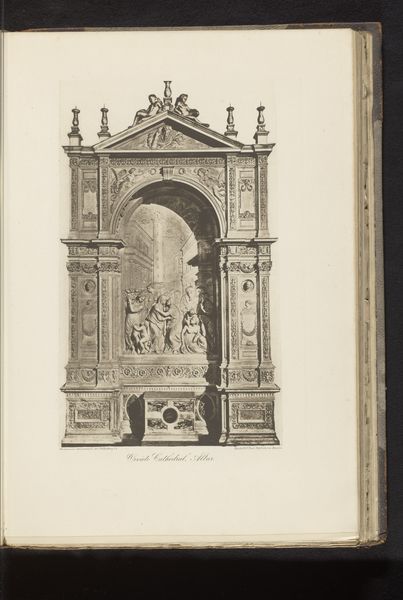
Kerkinterieur met rechtsbovenin een sculptuur van een mansbuste in een ovaal medaillon 1787
0:00
0:00
drawing, ink, engraving, architecture
#
drawing
#
neoclacissism
#
perspective
#
ink
#
cityscape
#
academic-art
#
engraving
#
architecture
Dimensions: height 302 mm, width 173 mm, height 414 mm, width 289 mm
Copyright: Rijks Museum: Open Domain
Curator: Let’s turn our attention to this 1787 drawing attributed to an anonymous artist, found at the Rijksmuseum. It's titled "Kerkinterieur met rechtsbovenin een sculptuur van een mansbuste in een ovaal medaillon" or, in English, "Church Interior with a Sculpture of a Man's Bust in an Oval Medallion in the Upper Right". Editor: The drawing appears rigid, almost architectural in its precision. The pillars seem endless. The entire church looks…unused? Cold. Curator: Indeed, it adheres to Neoclassical principles, visible in the symmetry and perspective. This style often evokes ideals of order and reason, hearkening back to classical antiquity. Look at the meticulous rendering of the architectural elements, it embodies academic art’s careful study and representation. Editor: What fascinates me is the drawing's medium. Ink and engraving allow for detailed line work. But also speaks volumes about production and labor. The artist painstakingly crafted this image—was this part of documenting the architecture itself? Curator: Potentially, yes. In the cultural memory, churches symbolize permanence, community, divine order. Placed within that is the bust, signifying individual recognition and importance in the context of this religious space. Think of it as the visual embodiment of the interplay between faith and individual identity within a larger social structure. Editor: And was this church commissioned and by who? The means always informs the symbolic weight! The types of paper, inks, engraving—the cost and labor contribute meaning. High church and all the materials associated speak volumes. Curator: Precisely. Even without concrete information about its making, that's all worth considering when reflecting on its purpose. We get to speculate and ask. Editor: It strikes me now, looking closely, how the architecture almost dwarfs the sculptural details—suggesting a prioritization of structural over the overtly expressive and emotional...food for thought. Curator: It is a thought-provoking combination, certainly. It makes one ponder the social values and the individual aspirations of the time it depicts. Editor: An architecture committed to permanence preserved on a less enduring material; interesting juxtaposition!
Comments
No comments
Be the first to comment and join the conversation on the ultimate creative platform.
